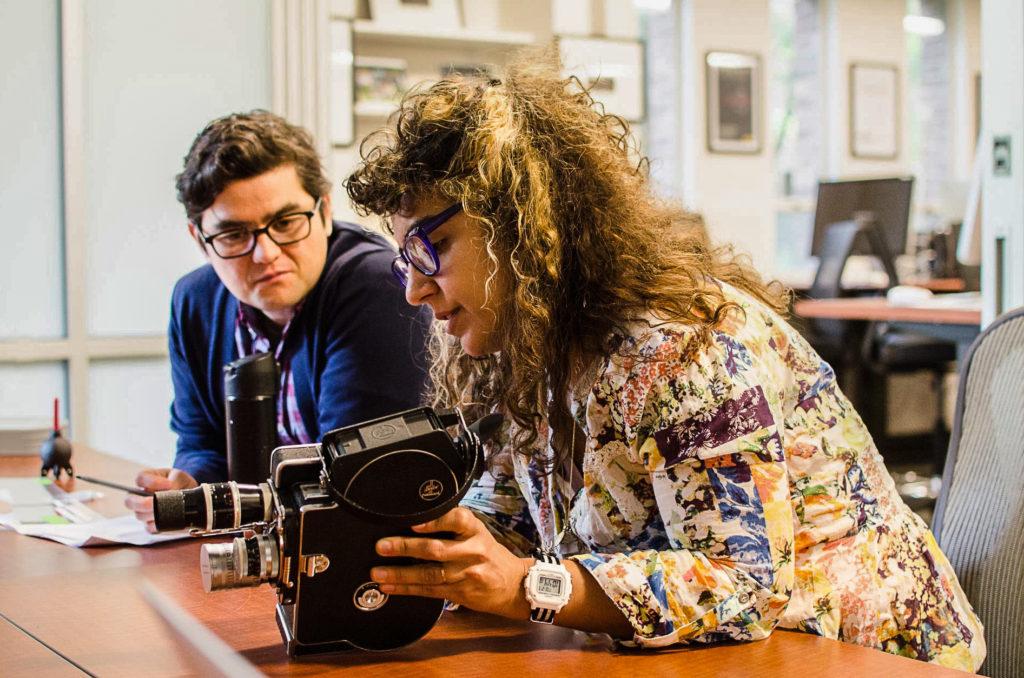
Next semester, new assistant professor Nicky Tavares will teach two film courses: Introduction to the Moving Image and Experimental Filmmaking.
“These are pilot courses, kind of trying out the courses because every college has a different culture,” said Tavares. She uses specialized teaching methods that focus on experimentation and group work, while striving to elevate underrepresented voices.
Tavares has an MFA in film and video from Massachusetts College of Art and Design. Previously, she has taught at UC Berkeley and had a residency at the Kala Art Institute. Her film work has been exhibited internationally at venues such as the Museum of Modern Art in New York and the Institute of Contemporary Art in Boston.
Tavares says she was drawn to Grinnell because “[its] commitment to social justice really inspired me … and reading about the College, it just felt so different. It feels different than other schools that I’ve attended and taught at.”
“[Introduction to the Moving Image will have] a solid technical foundation. It’s on video, specifically digital HD video and so students will create 4-5 production projects. Some of them are group projects, and some are individual but they’re all different prompts,” said Tavares.
This course will begin with a journaling sort of assignment and then a piece that’s called “Traces of Self’. “It’s a very open-ended project where you’re just kind of exploring who you are after you reflect on your journey through life. Those take shape in interesting ways, they’re as diverse as the students that make them,” said Tavares.
The course will also incorporate technical and theoretical readings that have shaped film as a discipline, as well as “historical and contemporary work in moving image,” said Tavares.
“It’s structured around … public or campus wide exhibitions,” said Tavares.
Tavares’ other course, Experimental Filmmaking, is more focused on film composition and more complex theory.
“In this course, it’s recommended that you have some video experience, but not required. It’s really looking at the history of experimental film starting in the 1920’s to the present day and also the impacts of experimental film on Hollywood cinema, on music videos, on commercials,” said Tavares.
“The course begins with this sort of process called direct animation or handmade cinema where you’re actually working on film strips that are blank and you’re physically collaging or drawing on film, so working in this handmade process.” Students will then be able to shoot on 26 mm film.
“You’re building a more robust toolkit and you’re prioritizing your ideas,” said Tavares.
Ultimately, Tavares’ goal is to encourage experimentation and a high output of work.
“I think it is key as far as takeaways just to have lots of opportunities to make mistakes to try things out … with something like film that’s easy to lose because when you just watch a finished film, all the labor involved gets lost easily,” said Tavares.





























































